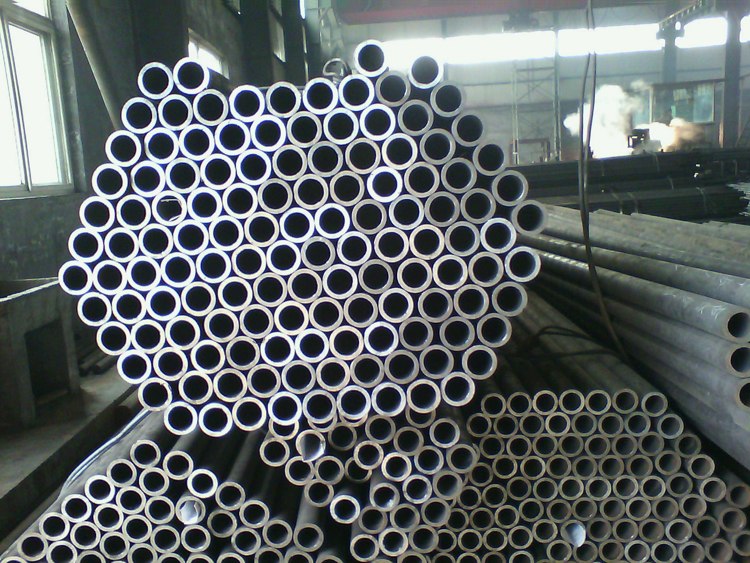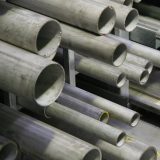What is the difference between 201 stainless steel and 304 stainless steel?
 What is the difference between 201 st...
What is the difference between 201 st...On the basis of carbon structural steel, steel with an appropriate amount of alloy elements (total content generally does not exceed 5 %). Due to the appropriate quenchtability, this type of steel is treated with the appropriate metal thermal treatment, and the micro tissue is a uniform sofa, a bellwriter or a very fine pearl, so it has high tensile strength and flexion strength and flexion strength. Compared (generally around 0.85), higher toughness and fatigue strength, and lower toughness -brittleness transition temperature, can be used to make machine parts with larger section size.

There are three aspects:
① Increasing the hardening of steel. Extractability refers to the depth of quenching from the surface when steel quenching, and it is the main parameter for achieving good comprehensive performance. Except for CO, almost all alloy elements such as MN, MO, CR, Ni, Si, C, N, B, etc. can improve the hardening of steel. Among them, MN, MO, CR, and B are the strongest. , SI, CU. For strong carbonizes, such as V, Ti, NB, etc., can the hardening of steel can be enlarged only when it is dissolved in the Austennic.

② Affecting steel recovery process. Because the alloy element can hinder the spread of various atoms in the steel at the time of fire, compared with the same temperature, compared with the carbon steel, it generally plays a role in delaying the decomposition of the macroxy and the grown -up growth of carbides, thereby increasing The fire stability of the steel recovery, that is, improves the anti -fire softness of steel. The effects of V, W, Ti, CR, MO, Si are significantly significantly, and the role of AL, Mn, and Ni is not obvious. Steels containing high -content carbides such as V, W, MO, etc. When igniting 500 to 600, the special carbonized substance dots such as VC [kg2] MOC, WC, etc. The carburizing body of the alloy, so that the strength of the steel no longer decreases and increases, that is, the secondary sclerosis (see the fire). MO has the effect of preventing or weakening the funds of steel.

③ Affects the strengthening and toughness of steel. Ni enhances irony body in solid -soluble reinforcement; carbides such as MO, V, NB, etc. form elements, which are not only scattered hardening, but also improved steel's yield strength in solid -soluble reinforcement. The reinforcement effect of carbon is the most significant. In addition, the addition of these alloy elements is generally refined by the Ausanoplasty grain to increase the enhancement of the crystal world. The toughness factors affecting steel are more complicated, and NI improves the toughness of steel; MN is easy to ricate the grain of Ao's body and is sensitive to the crispness of ignition; reducing P and S content, improving the purity of steel Function (see metal enhancement).

Metal structure steel is generally divided into quality tone steel and surface hardening structure steel.
① The carbon content of steel such as quality tone structure steel is generally about 0.25 % to 0.55 %. For the structural parts of the established section size, when the quality is adjusted (quenching and rebate), if it is quenched along the cross section, the mechanical performance then Good, if you do not quench, there is a free ironing body in the microcontroller, and the toughness decreases. For steel such as manganese steel, chromium steel, nickel chromium steel, etc. with the tendency of crispy crispy, it should be cooled after the ignition. The critical diameter of these steel quenching is increased with the increase of the grain size and alloy elements. For example, 40Cr and 35SIMN steels are about 30 to 40mm, while 40CRNIMO and 30CRNI2Mov steel are about 60 to 100mm. Larger load shafts, link rods and other structural parts.

② Surface hardening structure steel is used to make the surface layer of hard wear resistance and the flexible heart of the heart, such as gears and shafts. In order to make parts of the parts high, the carbon content in the steel should be low, generally 0.12 to 0.25 %, and there is an appropriate amount of alloy elements to ensure appropriate quenchability. Nitride and steel also need to add alloy elements (such as AL, CR, MO, etc.) that are prone to forming nitride. Carburizing or carbon nitrogen seepage steel, after 850-950 carburizing or carbon nitrogen penetration, quenching and using nitride and nitride treatment (480-580) in a low temperature recovery (about 200) , No longer quench and recovery.

According to the quality requirements of steel and steel, the smelting of alloy structure steel can use oxygen to blow the furnace, flat furnace, and arc furnace; The ingots can be cast or mold. Steel ingots should be cooled slowly or for forging and rolling. When the steel ingot is heated, you should try to be uniform temperature and have sufficient insulation time to improve the deficiency and avoid uneven deformation of forging and rolling.

Steel should be cooled quickly at 600 to avoid aggravating band -shaped tissues; forging large sections should take measures to eliminate internal stress and white spots. The mass -tuned steel should be quenched into a martyl -generated tissue as much as possible, and then recovered the Casposyrian tissue; during the carburizing process, the concentration gradient of the peak layer should not be too large, so as not to occur in the peak crystal crystal world. Carbonized; nitride must be treated with the required performance before heat treatment, and then nitride can be performed after final precision processing. Except for the crispy "white layer" after nitride treatment, except for grinding, no longer processing.
 What is the difference between 201 st...
What is the difference between 201 st... Why is 316 stainless steel better tha...
Why is 316 stainless steel better tha... 400 series stainless steel science
40...
400 series stainless steel science
40... How to distinguish the processing tec...
How to distinguish the processing tec... Non-standard design materials of bras...
Non-standard design materials of bras... What type of titanium alloy does Tc4 ...
What type of titanium alloy does Tc4 ...